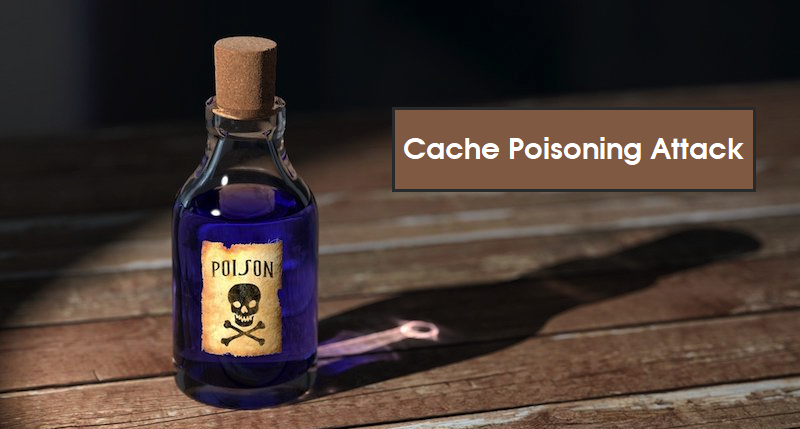
Cache poisoning is a type of cyber attack that involves manipulating the data stored in a caching system, such as a DNS resolver cache, in order to redirect traffic to a malicious website.
In a typical cache poisoning attack, the attacker will send fake or malicious information to a caching system, tricking it into caching the incorrect data. Once the data has been cached, legitimate requests for that data will be redirected to the malicious website, instead of the intended destination. This can allow the attacker to steal sensitive information or execute other attacks.
What is DNS Cache Poisoning?
DNS cache poisoning, also known as DNS spoofing, is the most popular cache poisoning attack that exploits vulnerabilities in the Domain Name System (DNS) to redirect traffic to a malicious website.
In a typical DNS cache poisoning attack, an attacker sends falsified DNS data to a DNS resolver, which caches the data. Subsequent requests for that data are then directed to the attacker's malicious website, rather than the legitimate website that the user intended to access.
For example, an attacker could manipulate the DNS data for a legitimate website, such as a bank's website, so that when users attempt to access it, they are instead redirected to a fake website that looks identical to the real one. Once the user enters their login credentials or other sensitive information, the attacker can capture that information and use it for malicious purposes.
DNS cache poisoning attacks can be prevented by implementing security measures such as DNSSEC, which adds digital signatures to DNS data to ensure its authenticity, or by regularly flushing the DNS cache to remove potentially malicious data. Additionally, it's important to keep software and systems up-to-date with the latest security patches and to use a reputable DNS resolver.
What other cache-poisoning attacks are there?
In addition to DNS cache poisoning, there are other types of cache poisoning attacks that can exploit vulnerabilities in other types of caching systems. Some examples include:
- Web cache poisoning: Web cache poisoning is a type of attack that exploits vulnerabilities in a web cache to inject malicious content, such as JavaScript, into the cached pages served to users. This can be used to steal sensitive information or execute other attacks.
- ARP cache poisoning: ARP (Address Resolution Protocol) cache poisoning is a type of attack that involves sending fake ARP messages to a computer or network device, tricking it into associating the attacker's MAC address with a legitimate IP address. This can allow the attacker to intercept or modify network traffic.
- NTP cache poisoning: NTP (Network Time Protocol) cache poisoning is a type of attack that involves manipulating the time information provided by an NTP server to redirect traffic to a malicious server or service. This can be used to steal sensitive information or execute other attacks.
- SMB cache poisoning: SMB (Server Message Block) cache poisoning is a type of attack that involves manipulating the cached information in a Windows system's SMB cache to redirect traffic to a malicious server. This can be used to steal sensitive information or execute other attacks.
How do you protect from cache poisoning?
Cache poisoning attacks can be used to redirect traffic, steal sensitive information, or execute other malicious actions by exploiting vulnerabilities in caching systems. It is important to implement security measures and keep systems up-to-date to prevent these types of attacks. There are several steps you can take to protect against cache poisoning attacks:
- Implement DNSSEC: DNSSEC (Domain Name System Security Extensions) adds digital signatures to DNS data to ensure its authenticity. By implementing DNSSEC, you can help protect against DNS cache poisoning attacks.
- Use a reputable DNS resolver: Use a DNS resolver that is reputable and well-maintained, and keep it up-to-date with the latest security patches.
- Regularly flush the cache: Regularly flushing the DNS cache or other caching systems can help remove potentially malicious data.
- Harden your network: Harden your network by using firewalls, intrusion prevention systems, and other security measures to help prevent attackers from gaining access to your systems.
- Keep software and systems up-to-date: Keep all software and systems up-to-date with the latest security patches to ensure that known vulnerabilities are addressed.
- Educate employees and users: Educate employees and users about the risks of cache poisoning attacks and how to identify and report suspicious activity.
By implementing the above safety measures, you can help protect against cache poisoning attacks and keep your systems and data secure.
Conclusion
Cache poisoning is a type of cyber attack that involves the modification of a domain name system (DNS) cache to redirect traffic to a malicious website. This attack can be carried out by an attacker sending a forged DNS request to a vulnerable DNS server, which then caches the malicious information. When a user attempts to access the legitimate website associated with the DNS request, they are redirected to the attacker's website, which may be designed to steal sensitive information or spread malware. Cache poisoning can have serious consequences for both individuals and organizations, making it a critical security issue that requires ongoing vigilance and mitigation efforts.
Share this post
Leave a comment
All comments are moderated. Spammy and bot submitted comments are deleted. Please submit the comments that are helpful to others, and we'll approve your comments. A comment that includes outbound link will only be approved if the content is relevant to the topic, and has some value to our readers.

Comments (0)
No comment